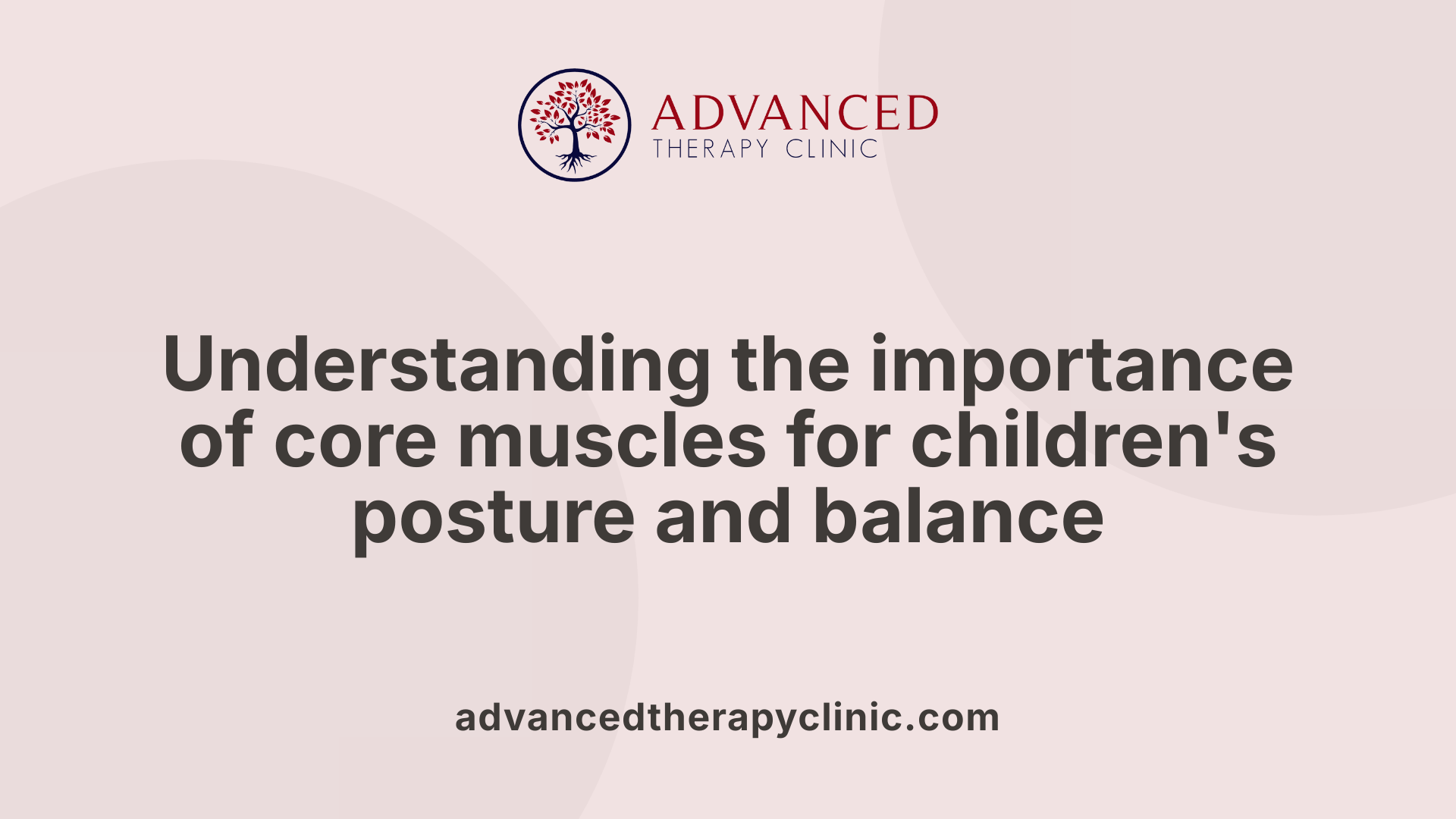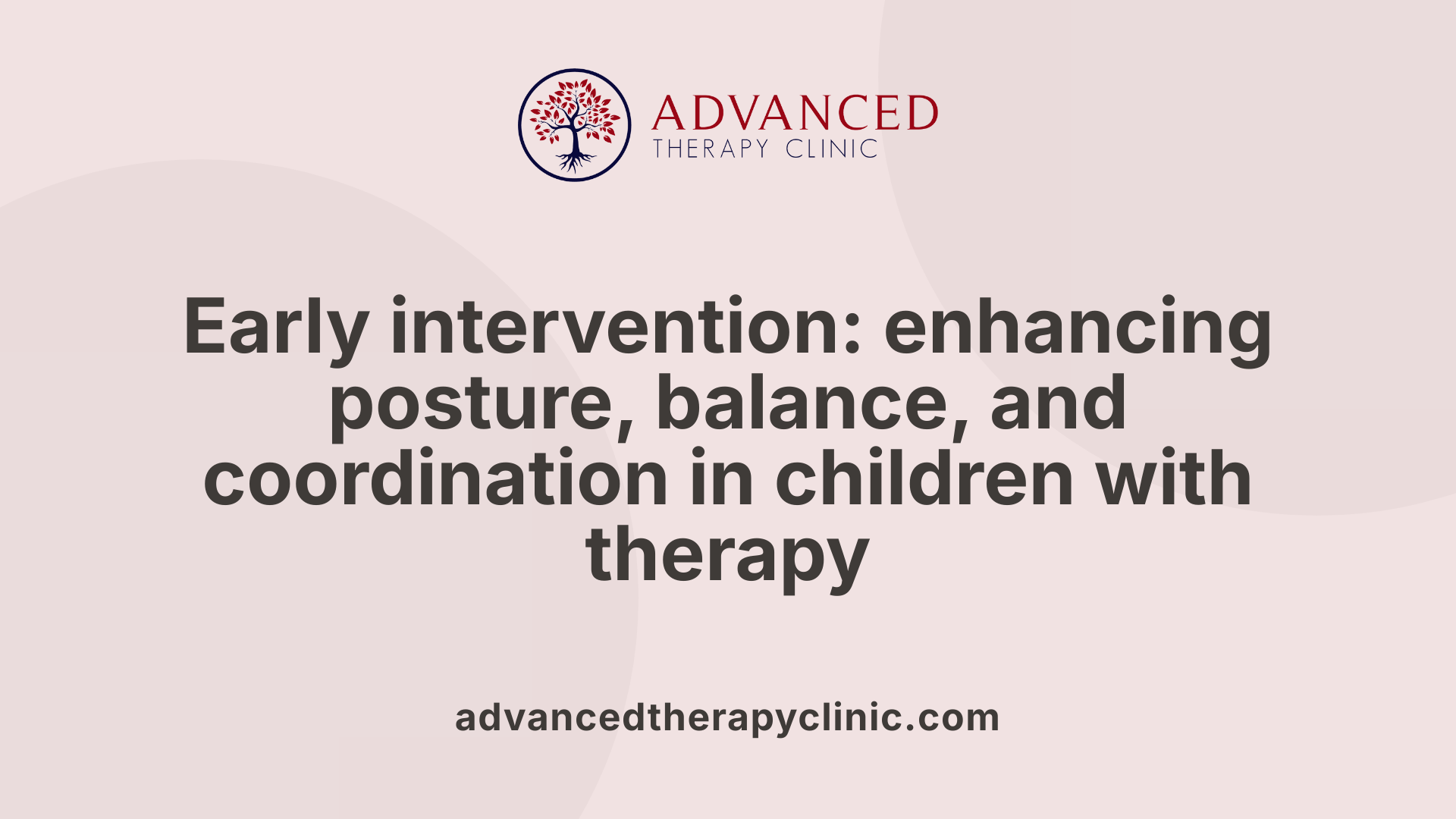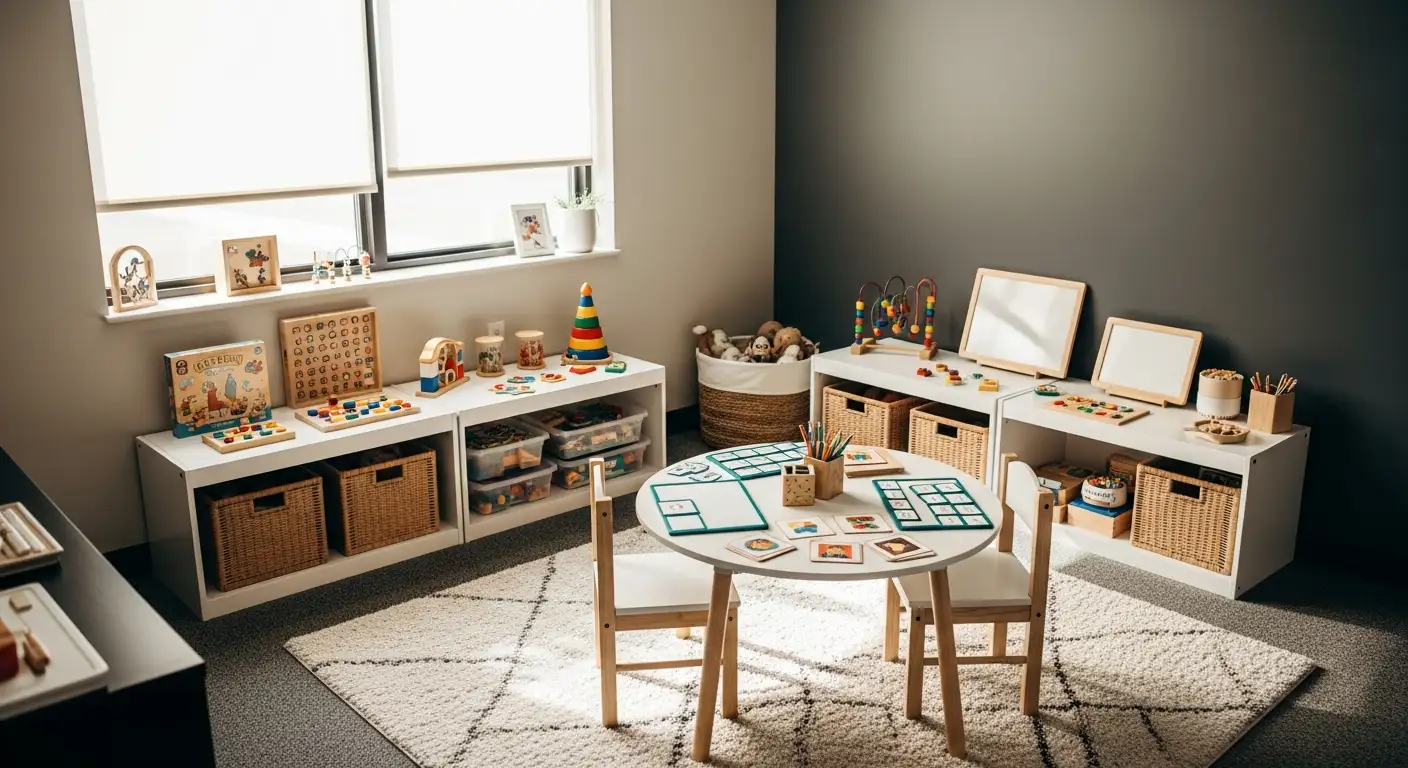Physical Therapy for Strengthening Core Stability in Children


Understanding Core Stability in Children
Core stability is foundational to a child's physical development, influencing posture, balance, and overall motor skills. This article explores how physical therapy interventions can strengthen core muscles in children, improving their functional abilities and preventing long-term mobility issues. We also clarify the range of therapies encompassed under the broader term 'therapy-related fields,' highlighting physical therapy's unique role in children's health.
The Spectrum of Therapy-Related Fields and Their Role in Child Development

What types of therapies are included under the collective term for therapy-related fields?
The collective term for therapy-related fields encompasses a broad array of approaches aimed at enhancing children's mental, emotional, and physical well-being. This spectrum includes psychotherapies such as Cognitive Behavioral Therapy (CBT), Dialectical Behavior Therapy (DBT), Acceptance and Commitment Therapy (ACT), psychodynamic therapy, and family therapy—each targeting various mental health concerns like anxiety, depression, and trauma.
Beyond mental health, therapy-related fields also cover physical therapy, occupational therapy, speech therapy, counseling, and nutrition therapy. Physical therapy focuses on improving movement, strength, and functional abilities, playing a vital role in supporting children’s gross motor skills and core muscle development. Occupational therapy helps children gain independence in activities of daily living, while speech therapy addresses communication challenges. Counseling supports emotional and behavioral growth, and nutrition therapy ensures proper dietary habits for healthy development.
Focus and goals of various therapy types
Each therapy type targets specific goals according to the child's needs:
- Physical therapy: Enhances muscle strength, coordination, balance, and posture.
- Occupational therapy: Builds skills for everyday tasks and adaptive functioning.
- Speech therapy: Improves articulation, language comprehension, and social communication.
- Counseling: Supports emotional regulation, coping strategies, and psychological resilience.
- Nutrition therapy: Promotes appetite, growth, and overall health through personalized dietary plans.
Physical therapy's place within this collective
Physical therapy is a cornerstone in the rehabilitation and developmental support for children, particularly those with motor delays or neuromuscular conditions. It employs fun, engaging exercises—such as balance training, core strengthening, and gross motor play—to promote posture, coordination, and movement efficiency. Physical therapists often integrate playful activities involving tools like stability balls and balance boards to motivate children, creating an enjoyable path toward improved physical function.
In summary, therapy-related fields collectively contribute to a holistic approach in child development, with physical therapy addressing vital physical milestones that support overall growth and independence.
Core Strength and Stability: What It Means for Children

What muscles make up the core in children?
The core musculature includes deep abdominal muscles, obliques, lower back muscles, hips, and pelvis. These muscles work together to stabilize the spine and pelvis, supporting movements such as walking, sitting, and standing. This strong muscular foundation enables children to maintain proper posture and perform daily physical activities efficiently.
Why are core muscles important for posture and balance?
Core muscles play a critical role in maintaining upright posture by stabilizing the trunk during sitting and standing. A strong core also improves balance and coordination, essential for motor control activities like running, climbing, and jumping. This stability reduces the risk of falls and injuries while promoting more efficient movements and reducing fatigue.
What signs might indicate weak core muscles in children?
Signs of weak core muscles vary with age but commonly include difficulty sitting upright, clumsiness, poor posture, and balance challenges. Children may avoid physical activities due to fatigue or instability and may display slouching or an off-center posture.
How does core weakness affect motor skills and posture?
Children with weak core muscles often struggle with gross motor skills such as running, jumping, and climbing. Poor core strength contributes to improper alignment, leading to issues like slouching and potential pain. Motor skills like balance and coordination suffer, which can hinder participation in sports or everyday activities. Early intervention through physical therapy and engaging exercises can improve core strength, enhancing posture, coordination, and overall movement abilities.
Physical Therapy Interventions to Strengthen Core Stability in Children

Types of physical therapy exercises targeting core muscles
Physical therapy for children focuses on exercises that strengthen the muscles around the trunk, including the abdomen, lower back, hips, and pelvis. Common core workouts include planks, bridges, and the Bird Dog exercise, which collectively improve postural control, balance, and coordination.
Use of playful and engaging activities
Therapists often incorporate playful, engaging activities to maintain children's interest and encourage participation. Balance games, gross motor play, and postural control strategies are designed to be fun, helping children build core strength without feeling like formal exercise.
Examples of specific exercises
Effective core exercises used in pediatric therapy include:
- Planks: Promote abdominal and lower back strength.
- Bridges: Enhance pelvic stability and lower back muscles.
- Bird Dog: Improves trunk stability and coordination.
- Yoga poses like plank, boat pose, and child’s pose encourage flexibility with core engagement.
Therapy tools
Specialized tools make exercises both enjoyable and effective. Stability balls and balance boards add an element of fun while challenging the child's balance and core muscles, aiding in greater strength development.
Home activities to support therapy
Parents can support therapy at home through active play such as crawling, climbing, jumping, and playing on playground equipment. These activities naturally engage core muscles and contribute to improved posture and motor skills outside of formal therapy sessions.
Benefits of Early and Targeted Core Strengthening through Physical Therapy

How does early core strengthening improve posture, balance, and coordination?
Targeted core strengthening exercises, particularly through physical therapy, focus on strengthening the muscles around the abdomen, back, and pelvis. In children, these improvements lead to better posture by supporting proper spine alignment and postural control. Enhanced balance and coordination result from a stable core that supports gross motor skills such as sitting, walking, and running.
Can early physical therapy prevent long-term movement difficulties?
Yes. Early intervention using physical therapy exercises like tummy time, planks, and balance training can significantly reduce the risk of developing long-term movement problems. Strengthening the core early helps prevent issues like slouching, chronic back pain, and poor motor coordination.
How does core strength enhance motor skill development?
A strong core supports dynamic movements necessary for activities like running, jumping, climbing, and sports. It serves as a foundation for motor control, allowing for more efficient and coordinated movements during play and physical activities.
Does core strengthening therapy reduce fatigue and injury risk?
Improved core stability leads to more efficient movement patterns, which decreases unnecessary muscle fatigue. It also protects the spine and surrounding muscles from strain, lowering the risk of falls and injuries in children.
How does physical therapy support children with developmental or neurological conditions?
Children experiencing developmental delays, low muscle tone, or neurological challenges such as cerebral palsy benefit from graded core stabilization exercises and therapies like whole-body vibration. These interventions improve trunk muscle strength and postural control, resulting in better balance and functional mobility.
Physical therapists use engaging, playful activities — including balance games, yoga poses, and tools like stability balls — to keep therapy motivating and effective. Additionally, active play at home, such as climbing and crawling, supports ongoing core development. Early and consistent core strengthening through these approaches builds a sturdy foundation for children's overall growth and physical well-being.
Advanced Therapies and Research in Core Stability for Children with Special Needs
What are the graded core stability exercises for children with special needs?
Core stability exercises for children, especially those with cerebral palsy, are designed with increasing difficulty to enhance postural stability progressively. These include:
- Supine abdominal draw-in: A foundational exercise focusing on engaging deep abdominal muscles while lying on the back.
- Pelvic bridging: Lifting the pelvis while lying down, improving lower back and hip strength.
- Bridging with physioball: Using a stability ball to increase challenge and engage multiple muscle groups.
- Prone bridging: Holding the plank position to build endurance and strength in the trunk.
How does whole-body vibration (WBV) therapy complement core exercises?
Whole-body vibration therapy involves standing or exercising on a vibrating platform, typically at 30Hz frequency and 2mm amplitude. This method stimulates muscle activation and balance mechanisms, leading to enhanced trunk muscle strength and postural control. WBV has been shown to provide greater improvements in balance compared to core exercises alone.
What is the effectiveness of these therapies in children with cerebral palsy?
Research indicates that both core stability exercises and WBV therapy significantly improve balance indices—including anteroposterior, mediolateral, and overall stability—in children with spastic cerebral palsy. Notably, these improvements apply equally to children with hemiplegic and diplegic forms of cerebral palsy, demonstrating the broad applicability of these interventions.
How do these therapies improve balance and postural control?
Enhanced trunk muscle strength from targeted exercises and WBV supports better alignment and stability of the spine and pelvis. This improves postural control, reducing the risk of falls and facilitating smoother, more coordinated movements essential for daily activities.
How is therapy progress monitored and documented?
Physical therapists document therapy by recording:
- Number of repetitions and duration of holds for each exercise.
- Improvements toward functional goals, such as sitting stability or walking balance.
- Reduction in pain or discomfort during movements.
This careful monitoring ensures therapies are tailored effectively and progress is tracked systematically, maximizing outcomes for children.
| Intervention | Target Group | Benefits | Therapy Monitoring |
|---|---|---|---|
| Graded Core Stability | Children with cerebral palsy | Improves postural stability | Repetitions, hold times, goal progress |
| Whole-Body Vibration (WBV) | Spastic, hemiplegic, diplegic CP | Enhances balance, muscle activation | Balance indices tracking |
The Pathway to Stronger Cores and Healthier Futures
Strengthening core stability through physical therapy is vital for children's overall physical development. From general balance and posture to specialized interventions for neurological conditions, targeted physical therapy exercises enhance functional abilities and quality of life. Early engagement, use of enjoyable activities, and professional guidance ensure that children build a strong foundation for motor skills and resilience. As part of a broad spectrum of therapy-related fields, physical therapy plays a crucial role in supporting children's health and enabling them to reach their developmental milestones with confidence.
References
Recent articles

Expressive Speech Delay 2-Year-Old
Understanding and Addressing Expressive Speech Delay in Toddlers

How Speech Recognition Works
Unlocking the Power of Speech Recognition in Therapy and Healthcare

Autism and Head Size
Understanding the Complex Relationship Between Autism and Head Size

Occupational Therapy in Autism
Enhancing Independence and Quality of Life Through Occupational Therapy in Autism

Do Autistic People Understand Sarcasm?
Navigating the Nuances: Understanding Sarcasm and Social Communication in Autism

Autism Routines
Crafting Effective Daily Structures for Children with Autism

